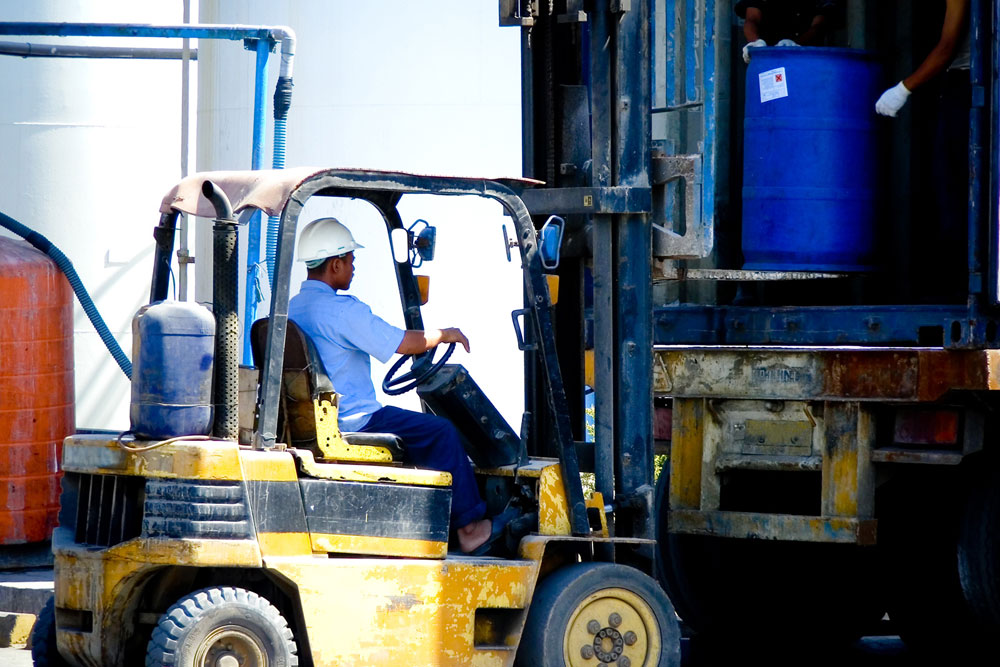If buying forklift trucks were as simple as comparing truck features, performance statistics, and prices, then you might be able to buy them over the Internet. But it’s not that simple. Lift trucks are complex, application-specific products and you need to choose carefully to meet your business and warehouse needs.
The right lift truck can deliver performance and capabilities that translate into higher warehouse throughput, more efficient space utilization, and lower operating costs. Many factors combine to achieve these results.
Kevin Trenga, manager of marketing communications for The Raymond Corporation, offers these 10 tips to help you select your next lift truck or fleet.
1. Match performance and specifications to business needs:
Work with dealers and sales personnel who know your industry and your business. Many large warehouses use a mix of pallet jacks, stackers, counterbalanced lift trucks, narrow aisle trucks, and very narrow aisle trucks. The composition of a warehouse fleet depends on many factors, including the type and number of products being handled, unit load characteristics, order picking requirements, the facility’s size and design, the type of rack used, the warehousing practices being employed, and the facility’s production (storage and throughput) requirements.
2. Define truck performance by pallet moves per shift:
Using a standardized measure allows you to compare trucks apples-to-apples. The combined performance of a lift truck and its operator largely defines productivity, which can be stated in terms of the number of pallets moved by a single truck and operator in a single shift.
3. Look for superior ergonomic design:
Studies in ergonomics show that increasing an operator’s comfort results in higher productivity, improved health and energy levels, and reduced absences from work. On a lift truck with good ergonomic design, an operator will perform better and work at a higher rate of productivity for a longer time. Ask for a product demonstration that lasts long enough for the operator to become comfortable with a new design or controls layout.
4. Ask for and check user references:
Choose products that have demonstrated high reliability in your specific application environment. Truck reliability determines the amount of uptime you get. It also directly affects ownership costs in terms of parts, labor, and temporary rental expenses. If you maintain your own lift truck fleet, reliability influences the number of service personnel, parts, equipment, and time needed to maintain your lift trucks.
5. Make sure parts are readily available for maintenance and repair:
Talk to other customers served by the local dealer for the truck you are considering. It’s simple: if limited availability of parts keeps you from properly maintaining a truck, or keeps you from fixing it if it breaks, the truck is not going to produce for you.
6. Validate the service capability of the dealer who will sell and service your truck: A quality product needs to be backed up by quality support. Make sure the dealer has enough technicians, service vans, parts inventory, and technical knowledge to respond according to your expectations. Dealer service response and effectiveness will influence total ownership costs by influencing truck uptime. If you are buying trucks for multiple locations, make sure that the dealer network for the brand can coordinate effectively among the locations that will serve your company.
7. Select a dealer with properly trained sales and support personnel:
Sales personnel should demonstrate a strong working knowledge of current practices in warehousing and distribution operations. They should have enough general business knowledge to intelligently discuss the specific needs and objectives of your business, and to relate these to their truck recommendations. The technicians that will service your trucks should have up-to-date training and should be manufacturer-authorized to support the specific type and model of truck that you are buying.
8. Ask the dealer how it will help you with fleet management:
The cost of owning and operating lift trucks can vary considerably by facility. Dealerships with extensive lift truck fleet management experience know where to look for savings. The dealer should be able to set up a fleet performance measurement process. It should also have software tools that can help you manage work orders, schedule routine maintenance tasks, track repairs, and flag overdue trucks to help you improve truck uptime and drive down unnecessary costs.
9. Base decisions on total cost of ownership:
Measure operating costs in terms of truck and operator productivity. Total cost of ownership (TCO) considers all cost-relevant factors, including the collective productivity of the lift truck fleet; the cost of purchasing the trucks and ancillary equipment; financing costs; and indirect costs such as repairs, maintenance, rental costs to replace down trucks, and energy costs to operate the trucks.
A measure of operating costs that helps identify differences between facilities is cost per pallet moved (CPM). You get CPM by relating TCO to the number of pallets a truck and operator, working together, can move in a shift. Using truck cost per hour can be misleading because it does not consider productivity.
10. Ask for well-designed, up-to-date training programs:
When done properly and as part of a broader safety program, lift truck operator training can help increase warehouse productivity and reduce operating costs while reducing the risk of accident and injury to drivers and other workers. Operators who know how to use equipment properly make fewer mistakes. They are more inclined to take care of equipment correctly. Training also reduces the likelihood of damage to equipment, racking and products. If you service your own trucks, be sure that the dealer can properly train and equip your technicians.







